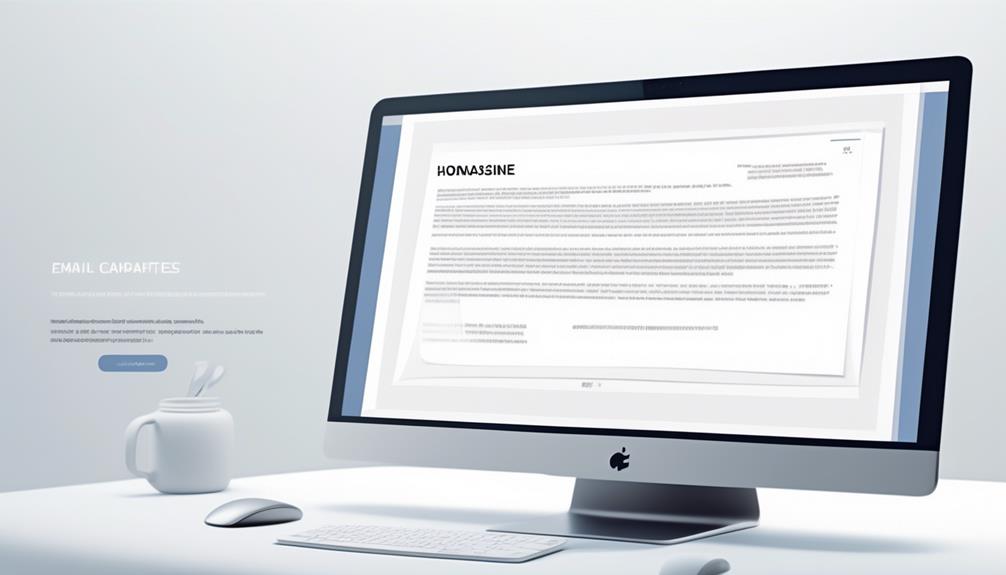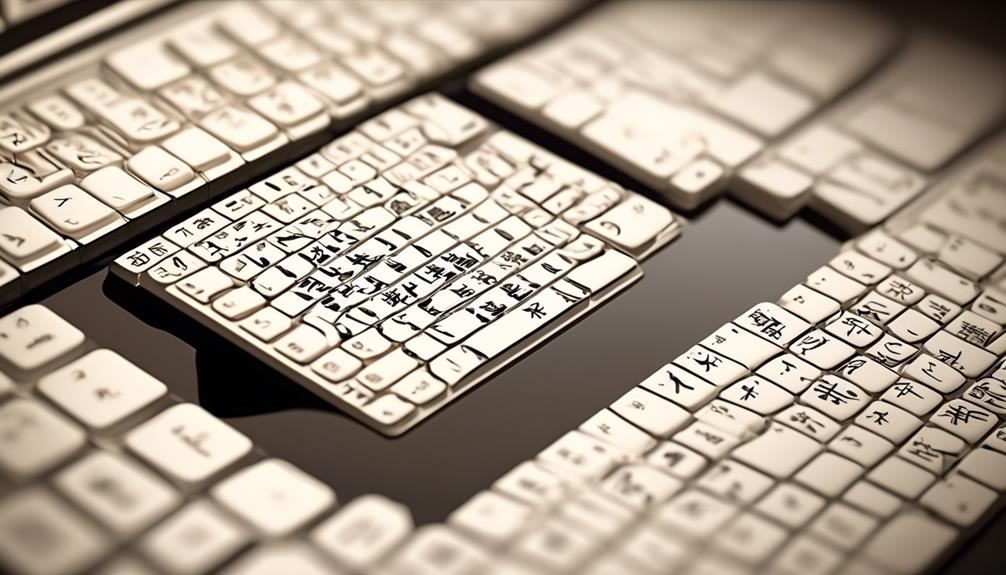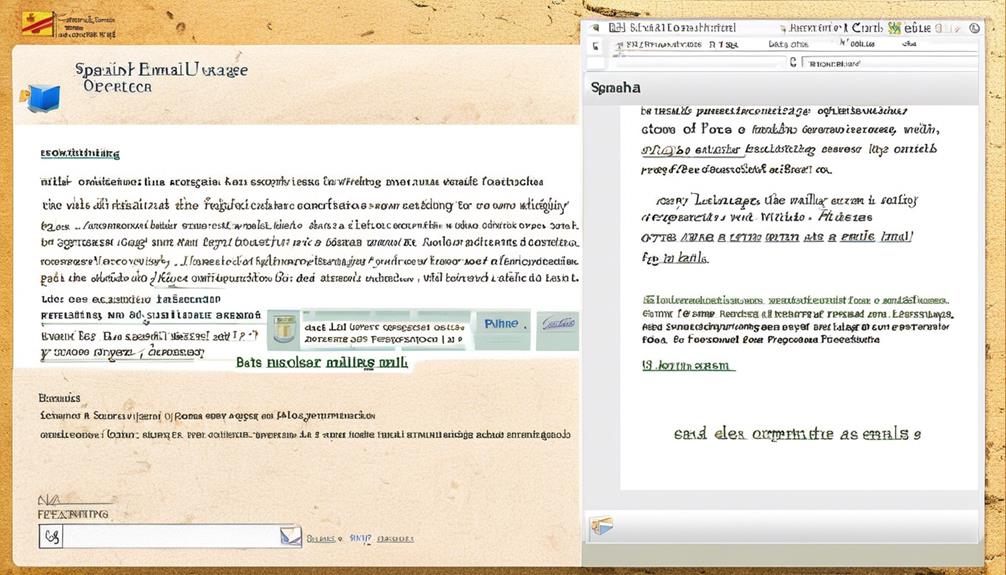Everyone knows penning an email in Japanese feels like climbing a mountain, yet it’s not as scary as it seems. You’ve got to nail the subject line manners and hit just the right note of formality. There are a few golden rules to remember when you’re drafting a Japanese email.
In this discussion, we'll explore the essential aspects of Japanese email writing, including addressing the recipient, choosing the right expressions, and structuring the body of the email.
Stay tuned to discover the nuances of effective email communication in Japanese.
Key Takeaways
- Clear and concise subject lines are essential in Japanese email writing.
- Addressing the recipient using their last name and appropriate title is important.
- Politeness and respect should be conveyed through formal greetings and expressions.
- The body of the email should focus on delivering clear and organized content.
Japanese Email Writing Basics
When writing emails in Japanese, it's important to follow specific guidelines for addressing the recipient, summarizing the content in the subject line, and using appropriate closing phrases. In Japanese email writing basics, adhering to the principles of Japanese business etiquette and societal norms is crucial.
The email format should start with a clear and concise subject line that summarizes the email's content. Addressing the recipient should include their last name and title, using honorific speech to show respect. Introduce yourself and your organization politely, reflecting the hierarchical nature of Japanese society.
In the body of the email, ensure that the message is presented clearly, addressing one topic per email to maintain clarity and ease of understanding.
Concluding the email with an appropriate closing phrase, such as 'よろしくお願いします' (yoroshiku onegaishimasu), is essential for leaving a positive impression. Understanding the nuances of Japanese greetings and the use of honorific speech is integral to effective communication.
Mastering these fundamentals of email writing in Japanese is vital for professional correspondence.
Subject Line Etiquette

To ensure effective communication in Japanese email writing, the subject line should succinctly summarize the content of the email, facilitating clear and efficient comprehension for the recipient. In Japanese culture, the subject line holds significant importance as it sets the tone for the entire email. It should be concise, direct, and relevant to the content of the email. To highlight the importance of the subject line in Japanese email writing, let's take a look at the following table:
| Point of Emphasis | Importance |
|---|---|
| Clear and Concise | Ensures the recipient quickly understands the email's purpose |
| Relevance | Helps in prioritizing and organizing emails |
| Professionalism | Sets a formal tone and demonstrates respect for the recipient |
In Japanese business etiquette, the subject line often includes the recipient's last name and their title. This reflects the adherence to the social hierarchy and respect for the recipient. Additionally, it is common to include the company name in the subject line to provide context and clarity. Mastering the art of crafting an effective subject line is crucial for professional Japanese email communication.
Addressing the Recipient
In our discussion of subject line etiquette, we now turn our attention to addressing the recipient in Japanese email communication, a crucial aspect that reflects respect and adherence to social hierarchy.
When writing emails in Japanese, it's essential to address the recipient using their last name and title. For example, using 'Sato-san' or 'Tanaka-sensei' shows the appropriate degree of respect.
When addressing multiple recipients, it's customary to use *Company name*の皆さん/様 or '各位' for a formal approach.
It's important to note that honorific suffixes like -san or -sama should generally be avoided. Furthermore, the position in relation to the recipient and the context of the relationship should be considered when addressing them.
Understanding the appropriate levels of respect and formality is crucial in Japanese email correspondence. A common phrase to start an email is 'お世話になっております' (Osewa ni natte orimasu), which conveys a degree of gratitude and respect.
Mastering the art of addressing the recipient in Japanese emails is fundamental for effective and culturally sensitive communication.
Polite Expressions and Greetings

We often commence Japanese emails with a formal greeting, such as 'いつもお世話になっております' (I'm always grateful for your help), to convey respect and gratitude. When addressing the recipient, it's customary to use their last name and appropriate title, without the need for honorific suffixes like -san or -sama.
After the polite greetings, we introduce ourselves, including our company's name and our role in the organization using the structure 'をしております' or 'を申します'.
When replying to an email, we use phrases like 'ご返信ありがとうございます' (Thank you for your reply) to acknowledge the recipient's response. Furthermore, we end the email with the standard closing phrase 'よろしくお願いいたします' to show politeness and respect, which can be modified for different levels of formality.
Crafting the Body of the Email
After establishing a respectful and formal tone in the email's greetings and introductions, the body of the email should focus on delivering clear and organized content, starting with a succinct and informative subject line. Crafting the body of the email is crucial in Japanese business etiquette, as it reflects the concept of respect and professionalism. Below is a table highlighting common business email components and their significance in the context of writing emails in Japanese:
| Email Component | Significance | Example |
|---|---|---|
| Subject Line | Summarizes the message, grabs the recipient's attention, and sets the tone for the email | "Meeting Request for Project Discussion" |
| Introduction | Provides context, establishes a connection, and conveys the sender's identity | "I am writing on behalf of XYZ Corporation…" |
| Body Content | Delivers the main message, requests, and expressions of gratitude | Clearly state the purpose and any action needed |
| Formatting and Structure | Organizes the content for clarity and ease of reading, reflecting professionalism | Use line breaks and bullet points for clarity |
| Closing | Concludes the email with an appropriate level of formality and well wishes | "Thank you for your attention to this matter" |
In the body of the email, each section serves a specific purpose in conveying information effectively while adhering to Japanese business etiquette. Understanding these components is crucial for crafting impactful and respectful emails in a Japanese business context.
Frequently Asked Questions
How Do Japanese Write Emails?
We write emails in Japanese by following cultural norms and using appropriate language and etiquette.
It's important to address the recipient with the correct honorifics and pay attention to formalities.
Introducing ourselves and our organization in a polite manner sets the tone for the email.
Each topic should be addressed separately in the body of the email.
We end the email with a respectful closing phrase to convey our gratitude or intentions.
What Is the Email Format for Japan?
We understand the importance of email etiquette, and we're happy to share the email format for Japan.
In Japan, a concise subject line, formal recipient addressing, clear introduction, focused body content, and polite closing phrase are crucial. Adhering to these guidelines helps convey respect and professionalism in Japanese business communication.
Mastering this format will enhance your effectiveness in engaging with Japanese counterparts.
How Do You Address a Japanese SAN Email?
When addressing a Japanese recipient in an email, we use their last name and title without honorific suffixes like -san or -sama.
It's important to show respect and formality in our communication. This sets a professional tone and demonstrates cultural awareness.
How Do You Politely End an Email in Japanese?
We politely end an email in Japanese by using phrases like 'どうぞよろしくお願いいたします' (Douzo yoroshiku onegai itashimasu) or adding modifiers for increased formality, such as '何卒宜しくお願いいたします' (Nanitozo yoroshiku onegai itashimasu).
It's crucial to match the formality level used throughout the email and express gratitude and respect.
A formal closing, like '敬具' (Keigu) or '敬語' (Keigo), followed by our name and organization, leaves a positive impression.
Conclusion
In conclusion, writing a Japanese email requires attention to detail and proper etiquette. Are you ready to impress your Japanese contacts with your email writing skills?
Remember to follow the format, use polite expressions, and address the recipient appropriately.
With these tips, you can effectively communicate in Japanese and build strong professional relationships.










